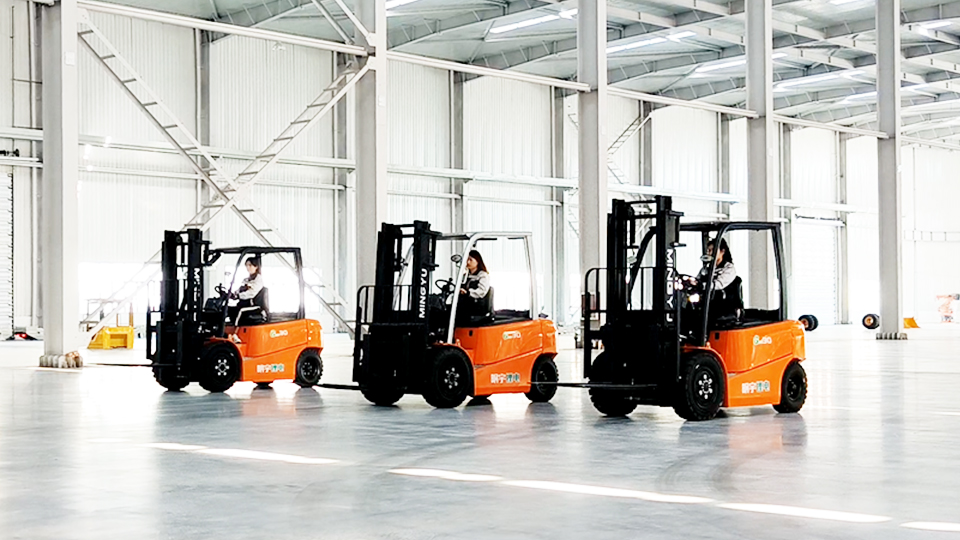
Pallets are the backbone of modern logistics and warehousing, facilitating the efficient movement of goods across supply chains. However, the seemingly simple act of lifting a pallet with a forklift involves adherence to industry standards to ensure safety and prevent damage. A crucial question arises: which end of the pallet should be engaged by the forklift's tines? This article delves into the industry standards and best practices governing pallet lifting, addressing the optimal orientation for forklift engagement.
Understanding Pallet Structure and Orientation:
Before examining lifting standards, it’s essential to understand the basic structure of a standard pallet. Pallets, particularly those adhering to the widely used GMA (Grocery Manufacturers Association) specifications, consist of:
Stringers: These are the longitudinal support members that run the length of the pallet.
Deckboards: These are the top and bottom boards that form the surface of the pallet.
Notches: These are cutouts in the stringers, designed to accommodate forklift tines.
Pallets can be lifted from either the stringer end or the entry end (where notches are present). However, industry standards and best practices dictate a preference for one orientation over the other.
Industry Standards and Best Practices:
The primary concern when lifting pallets is stability and safety. Industry standards, primarily influenced by OSHA (Occupational Safety and Health Administration) regulations and recommendations from organizations like the National Wooden Pallet & Container Association (NWPCA), emphasize the following:
Stringer Entry:
Lifting pallets from the stringer end is generally considered the safest and most stable method.

Stringers provide a solid, continuous surface for the forklift tines to engage, minimizing the risk of the pallet tipping or shifting.
This method is particularly recommended for heavy or unstable loads.
Entry End (Notched) Entry:
While possible, lifting from the entry end, where notches are present, can be less stable.
The notches, while designed for forklift access, can weaken the structural integrity of the pallet, especially under heavy loads.
This method may increase the risk of damage to the pallet itself.
However many modern "4 way" pallets are designed to be lifted from any side.
Pallet Orientation and Load Distribution:
Regardless of the entry method, proper load distribution is crucial for stability.
The load should be evenly distributed across the pallet surface, with heavier items placed closer to the center.
Pallets should be oriented so that the load's center of gravity is aligned with the forklift's center of gravity.
Pallet Quality and Condition:
Damaged or weakened pallets should never be lifted, as they pose a significant safety risk.
Pallets should be inspected for damage, such as broken stringers, loose deckboards, or cracked notches, before lifting.
The quality of the pallet impacts it’s ability to take the weight of the load.
Forklift Operation and Technique:
Forklift operators should be properly trained and certified.
Tines should be fully inserted into the pallet openings before lifting.
Lifting should be performed smoothly and steadily, avoiding sudden movements.
Pallets should be kept as close to the ground as possible during transport.
Factors Influencing Lifting Orientation:
Several factors can influence the optimal lifting orientation:
Load Weight and Stability: Heavier or unstable loads should ideally be lifted from the stringer end for maximum stability.
Pallet Type and Construction: The type and construction of the pallet, including the presence of notches and the quality of the materials, can influence the optimal lifting method.
Operating Environment: The operating environment, such as the available space and the presence of obstructions, may dictate the lifting orientation.
Forklift Type and Tine Length: The type of forklift and the length of the tines can influence the ability to safely engage the pallet.

Industry Standards Organizations and Resources:
Several organizations provide guidance and resources on pallet handling and forklift safety:
OSHA (Occupational Safety and Health Administration): OSHA regulations set safety standards for workplace operations, including forklift operation and material handling.
NWPCA (National Wooden Pallet & Container Association): The NWPCA provides information and resources on pallet design, construction, and handling.
ISO (International Organization for Standardization): ISO standards address various aspects of pallet dimensions and material handling.
GMA (Grocery Manufacturers Association): The GMA sets standards for pallet dimensions and quality, particularly for the food and beverage industry.
Technological Advancements:
Technological advancements are improving pallet handling and safety:
RFID and Tracking Systems: RFID tags and tracking systems enable real-time monitoring of pallet location and condition.
Automated Guided Vehicles (AGVs): AGVs can automate pallet handling, improving efficiency and reducing the risk of human error.
Sensor Technology: Sensor technology can detect pallet damage and instability, alerting operators to potential hazards.
Name: selena
Mobile:+86-13176910558
Tel:+86-0535-2090977
Whatsapp:8613181602336
Email:vip@mingyuforklift.com
Add:Xiaqiu Town, Laizhou, Yantai City, Shandong Province, China